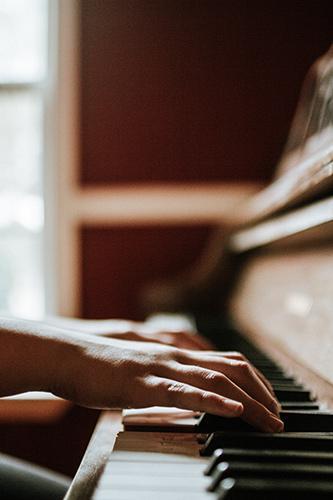 Nothing beats a new piano and Piano Price Point is dedicated to delivering the news about the makers of new pianos. But sometimes they are simply unaffordable, inaccessible or possibly even discontinued and so it necessitates buying used. But that begs the question, how old is too old? At what point do pianos no longer function the way they were originally intended?
Nothing beats a new piano and Piano Price Point is dedicated to delivering the news about the makers of new pianos. But sometimes they are simply unaffordable, inaccessible or possibly even discontinued and so it necessitates buying used. But that begs the question, how old is too old? At what point do pianos no longer function the way they were originally intended?
In my lifetime I’ve viewed and played several thousand pianos and as I pondered this question, it made me think about what changes occur in the lifetime of a piano. More specifically, how and why do pianos alter over time and what causes them to sometimes dramatically shift? There are 3 possible answers to this question: how much the instrument is played; the environment it is kept in; and decomposition over time.
For example, a performer working on their Masters level piano degree, practicing 2 – 6 hours per day of concert level material, will use a piano very differently to a beginner student who gently touches the keys a few times per week. In a decade, the advanced performer’s piano will become substantially worn. So, it is safe to say that for pianos in an area of high use, wear and tear of the instrument is accelerated.
I’ve also witnessed pianos that have been housed in adverse environments. I remember this one piano that was covered in what I could only be describe as cooking grease. Repetitive use of cooking oil in close quarters with the piano caused adverse effects on the instrument. The outside of the piano looked almost fogged, its shiny black finish reduced to a dull matt. More than that, however, the parts inside were also coated and rendered the action sticky. I’ve seen pianos that have been in fire, floods and ones that have been infested with bugs. While these are extreme environmental conditions, there are also varying degrees of subtle ‘life altering’ conditions that will, day after day, year after year change a piano. Things such as exposure to the beating hot sun, or widely fluctuating temperatures and humidity can affect the tone, performance and even cabinet of a piano. I would then categorize environment as a substantial factor in piano aging.
Finally, decomposition takes its toll on pianos. Even if a piano has been kept in a pristine environment and never been played, decades later it will still not perform like a new piano. I remember stepping into a house that was almost like a time warp. The house was built in the late 1800’s but no one had lived there for at least 60 years. All of the furniture was intact, as if the door had been locked and everything remained as is. The table was even set with china! The piano was turn of the century and there was no way of knowing how much it had been played prior to that, but I can’t remember ever seeing a cabinet of an old piano that looked so new on the outside. One of the unique features of this piano cabinet was that it had designs etched into the finish (instead of carvings in the wood). I had never seen that before. 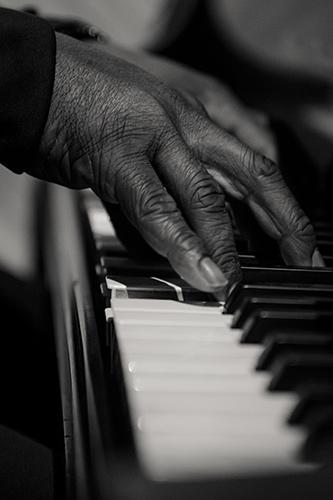 While it was remarkable to see, as I played the piano and observed the action parts and strings, the piano seemed to have aged substantially. When I have viewed and played vintage pianos and other keyboard instruments in museums, I notice that soft parts, like felt and leather, harden and break down over time, sadly resulting in a piano that is too loose to the touch, brittle in tone and lacking elasticity and resilience. Decomposition of parts is therefore a major contributing factor to piano aging.
While it was remarkable to see, as I played the piano and observed the action parts and strings, the piano seemed to have aged substantially. When I have viewed and played vintage pianos and other keyboard instruments in museums, I notice that soft parts, like felt and leather, harden and break down over time, sadly resulting in a piano that is too loose to the touch, brittle in tone and lacking elasticity and resilience. Decomposition of parts is therefore a major contributing factor to piano aging.
The question then, as previously stated is how old is too old? How much playing affects the value of a piano? How many years in adverse environmental conditions affect the condition? And how many years pass before aging passes the point of no return? Let’s take a look at each of these scenarios to help better understand how pianos age.
We live in a disposable society. It’s remarkable to me that pianos that were built over 100 years ago still make any music whatsoever… but they do! The natural aging process for pianos happens considerably slower than most consumable products. When it comes to fashion, it changes several times per year. Cars; most people are looking for a newer vehicle every decade (or possibly even less!) Pianos… they don’t even begin to show signs of wear under normal conditions within the first decade. So then, what are normal conditions?
These are my own parameters that I believe will maintain a piano in good health:
- Right location in the house. See our article on Bringing Your Piano Home
- No toys, food or drinks, an no acts of aggression. These were my 3 rules for my kids when they were young. The first 2 save the piano from unnecessary damage. The 3rd was simply one of respect. My children weren’t violent in any way but I also understand practicing and the frustration that sometimes brings when you’re not accomplishing what you intend to. I’ve certainly felt like I wanted to slam my fists on the keys at times over my years of practice! And while pianos are robust and could probably handle such force, it’s the intent that counts.
- Regular cleaning. I can’t say enough good about Cory products. Over the years, these are, in my mind, the absolute best for piano cleaning and care.
- Regular servicing. Having a piano tuned and regulated prevents pianos from experiencing accelerated wear.
With these normal conditions, pianos should age gracefully. The question that remains then is, how much use is “normal”? If you’re buying used, finding out prior usage is advantageous. Again, these are my own thoughts, but I believe that pianos are made to endure 2 hours or less of playing per day. University or institution practice pianos are sometimes being played up to 16 hours per day which represents 8 times the amount of maximum practice a piano should endure. Let’s face it though, most pianos at home probably get played (if you’re a regular piano player) ½ an hour to an hour each day. The following should give you some idea about what to expect for pianos at different ages with “normal” playing that has been well cared for in an appropriate environment:
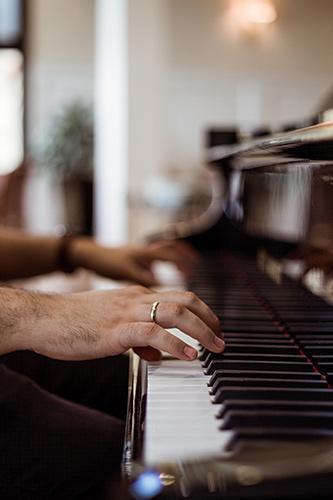 New to 10 years: Within a decade, the piano will hardly change. In fact, well taken care of with the aforementioned parameters, I would even go out on a limb and say that even during the first 20 years, a piano may almost feel new.
New to 10 years: Within a decade, the piano will hardly change. In fact, well taken care of with the aforementioned parameters, I would even go out on a limb and say that even during the first 20 years, a piano may almost feel new.
10-20 years: Depending on use and environment, sometimes pianos feel brand new while at other times, they might feel subtly broken in.
At 30 years: the difference between the new, tight and succinct feel of a piano can change depending on use. With light use, pianos will feel like the 20-year version. With extensive playing, a piano will feel like a comfortable shoe; it no longer feels like it has “new piano” resistance under your fingers but neither will it feel worn. It simply feels like it has been broken in nicely. Now bear in mind that we’re under the assumption that the piano is in an ideal environment at this stage with normal 2 hours or less wear per day.
Crossing the 40- and 50-year marks: I start to feel and hear the difference of the wear. Heavy playing or advanced level playing will have affected the action joints and the bushings start to feel loose. In my journeys, I’ve viewed many pianos that were purchased with the intention of educational use and received light playing for a year or 2 before sitting un-played for decades. These pianos often feel to me like the 20-30 year pianos due to minimal usage.
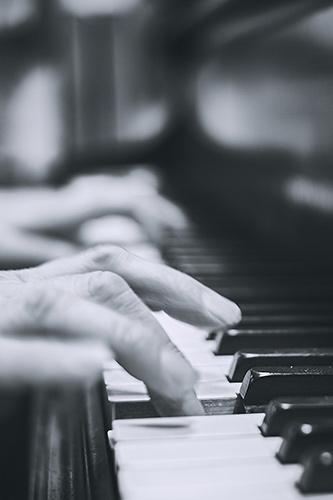
While this determines a piano with normal wear under ideal conditions, what happens to pianos in a non-ideal setting? Pianos exposed to the sun constantly, or ones that have substantial fluctuation in temperature and humidity will exhibit age much faster than ideal environments. Pianos fare best with little or no sun, in a well ventilated area, not too close to a heat source and with constant humidity. Change one of those factors and pianos age faster. A 30-year-old piano baking in the sun every day versus a 30-year-old piano in ideal conditions will be very different instruments. Excessive dryness or humidity will result in either dried out wood and loose parts or conversely, mouldy/rusty or seized parts. That’s the impact of environment.
When it comes to decomposition due to age, yes, the environment plays a huge factor acting as a catalyst for aging. But even with normal conditions and perfect environment, the parts will break down with time. Let’s say we have a piano that has never been played, is in perfect condition in an ideal environment, and is 40 years old. What will it be like? My hunch is that that piano would operate similarly to a 20-year-old piano under normal wear. But by the time it reaches the 60-year mark, without any playing, it is my experience that pianos somehow feel different and sound different. Felt will dry out, leather will become hardened. Moisture has dissipated. In truth, decomposition is still a product of environment but I consider this a separate category from environment because there is a noted shift to “old piano” feel even within ideal parameters of environment. To me that time is 60-65 years. Pianos become ‘vintage’. Left to their own devices, 60 year old pianos will simply not feel anywhere near what a new piano is like. They can make music, yes; and they can sound beautiful but they will not feel and sound like a new piano. The higher the quality of the instrument, in my experience, the more gracefully they age due to the original quality of the parts.
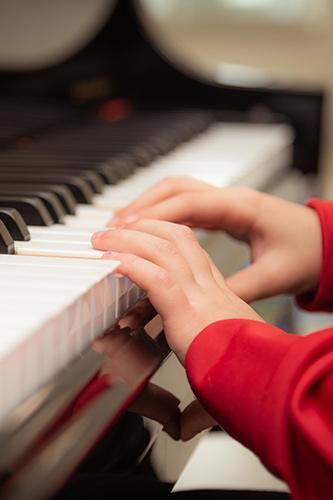 By the time you reach a century, these pianos are a mile away from what a new piano feels or sounds like. And again, there may be nothing wrong with them. My 105 year old C.Bechstein sounds beautiful, but it does not feel at all like the new pianos I play. I’ve played many pianos that are fantastic sounding that are really old… but they don’t feel tight and succinct or sound as ‘focused’ like new pianos and that is the discussion for today. At 100 years, most joints and bushings are worn, the felt hammers are dried. Oddly, tuning pin stability can sometimes feel like brand new but could conversely feel average or soft. And on top of this, the condition of the soundboard and bridges may have shifted and be cracked or warped. In addition to age, piano design has changed dramatically in the last 100 years and so, even if that 100 year old piano were new today, the scale design, the geometry of pianos has changed considerably. I think of pianos sometimes like the lifespan of a human being. They are full of vim and vigor until 30. Mid-life comes along and slows things down a notch. Retirees are often very active and strong. At a century, undoubtedly, the legs may not be as spry 😀
By the time you reach a century, these pianos are a mile away from what a new piano feels or sounds like. And again, there may be nothing wrong with them. My 105 year old C.Bechstein sounds beautiful, but it does not feel at all like the new pianos I play. I’ve played many pianos that are fantastic sounding that are really old… but they don’t feel tight and succinct or sound as ‘focused’ like new pianos and that is the discussion for today. At 100 years, most joints and bushings are worn, the felt hammers are dried. Oddly, tuning pin stability can sometimes feel like brand new but could conversely feel average or soft. And on top of this, the condition of the soundboard and bridges may have shifted and be cracked or warped. In addition to age, piano design has changed dramatically in the last 100 years and so, even if that 100 year old piano were new today, the scale design, the geometry of pianos has changed considerably. I think of pianos sometimes like the lifespan of a human being. They are full of vim and vigor until 30. Mid-life comes along and slows things down a notch. Retirees are often very active and strong. At a century, undoubtedly, the legs may not be as spry 😀
Can pianos be brought back to their former glory? Absolutely. But that is a discussion for another day. Soft parts like leather and cloth need to be replaced while many of the hard parts of wood and cast iron could be perfect for continued use.
These thoughts around piano aging are purely subjective based on years of observation as a player and technician. It’s difficult to determine a ‘law of averages’ when there are so many variables such as brand, model, condition, use and environment but the message still paints broad brush strokes: I would never shy away from used pianos simply because of a date. Examine, think critically, talk to professionals, listen and play. In the disposable era in which we live, pianos withstand the test of time for decades. My intent is to provide some insight into what professionals feel when examining a used piano and to also relay the simple message that pianos don’t age overnight. In essence, pianos are only new for one day. After that, everything ages. Hopefully we can age as gracefully as our pianos 🙂
MORE PIANO ARTICLES

During the performance of Jacob Collier at the most recent NAMM show I was reminded that music makes us human, that beauty binds us together as a collective, and that the reason the music industry exists is to aid in the creation of art. I needed that reminder without which, the annual trade show featuring many of the great piano makers is just the sale of wares. I believe that people are feeling the uncertainty ...
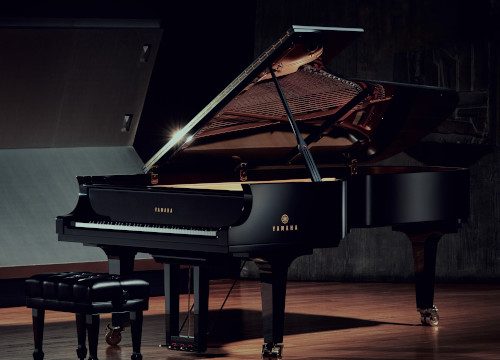
I used to have a teacher who would frequently say, “For every single grade point PAST 80%, it takes as much effort as the FIRST 80.” I believe this statement to be true from experience. The first 80 is the easiest. Chipping away at every point past that is the challenge. The bulk of the work can bring a project into shape but it’s the pursuit of excellence, that’s where the challenge lies. Yamaha is ...

The value of a piano is obvious ~ it’s the music that you make with it. But often, families are going through life changes which involve a house move and unfortunately, the piano needs to be sold. They invariably ask the question, “What are we going to do about the piano?” This question comes up because, as you can imagine, they’re not easy to move. We don’t simply pack them away in a cardboard box ...

You’ve been playing your piano for years now and the time has come to seriously consider downsizing the house and move into a condo. But what do you do with the piano? You love your piano and can’t imagine life without it and besides, you absolutely hate the idea of playing a digital keyboard. Many people don’t know that you can add digital functionality without compromising your existing piano. Yes, it is completely possible to ...

Many years ago, I remember seeing a piano in a museum similar to the one shown above (built in 1787 by Christian Gottlob Hubert. On display at Germanisches Nationalmuseum - Nuremberg, Germany). I have often wondered why acoustic portable pianos never really took off. Although we've seen more portable keyboard instruments like harpsichords, accordions or electronic keyboards, they operate completely different from a traditional piano in that they either pluck the strings, use air with ...

This was the first year since covid that the National Association of Music Merchants (NAMM) trade show was back to its regular January date and, in fact the first show where it felt back to normal. How was it? To answer that, I'm going quickly review the piano market over the last few years. Piano sales boomed during covid. Think about it - everyone was at home and with time on their hands, many turned ...